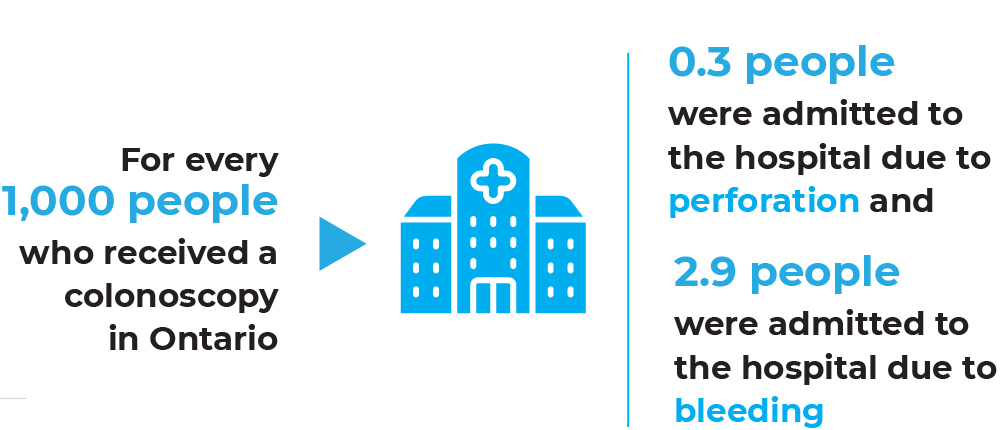14-day post-colonoscopy hospitalization rate for perforation or bleeding
Why is this important? In population-based screening, it is important to maximize benefits while minimizing harm. However, with any invasive procedure such as colonoscopy, there is the risk of an adverse event.1 Perforation of the colon means that a small hole is made in the colon and is a complication that will lead to hospitalization, may require surgery, and could lead to death.2 Measuring hospitalization due to bleeding or perforation are therefore important to monitor the harms that may occur from screening.1
Indicator definition: The number of colonoscopies per 1000 that result in an individual being admitted to the hospital within 14 days for bleeding and/or perforation.
Indicator calculation:
Numerator: Number of colonoscopies followed by hospital admissions occurring within 14 days of colonoscopy.
Denominator: Total number of colonoscopies performed within the measurement timeframe.
How does 2017/18 compare to 2013/14? Data for this indicator was not collected in 2013/14.
Rate (per 1,000) of hospitalization for outpatient colonoscopies, Ontario, by reason for hospitalization, colonoscopies performed from 2017 – 2018
Ontario, Prince Edward Island, and Yukon provided data for this indicator. However, due to small numbers in PEI and YT, only the results for ON could be reported.
In Ontario, 0.3 per 1,000 colonoscopies required hospitalization for perforation within 14 days. 2.9 per 1,000 colonoscopies required hospitalization for bleeding within 14 days.
References
1 – Key performance indicators for the National Bowel Cancer Screening Program. Australian Institute of Health and Welfare.
2. Colonoscopic perforation: Incidence, risk factors, management and outcome. NCBI.

